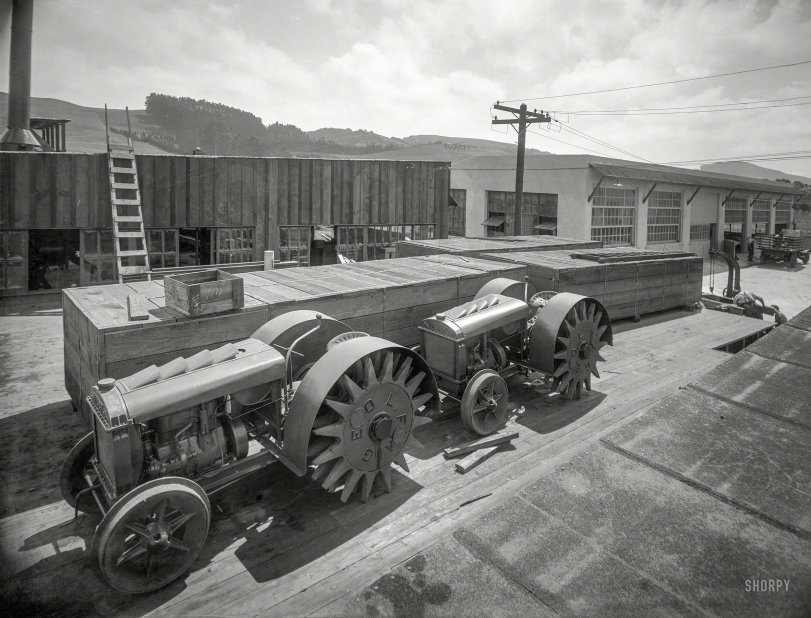


Framed or unframed, desk size to sofa size, printed by us in Arizona and Alabama since 2007. Explore now.
Shorpy is funded by you. Patreon contributors get an ad-free experience.
Learn more.

- Texas Flyer wanted
- Just a Year Too Soon
- WWII -- Replacing men with women at the railroad crossing.
- Yes, Icing
- You kids drive me nuts!
- NOT An Easy Job
- I wonder
- Just add window boxes
- Icing Platform?
- Indiana Harbor Belt abides
- Freezing haze
- Corrections (for those who care)
- C&NW at Nelson
- Fallen Flags
- A dangerous job made worse
- Water Stop
- Passenger trains have right of way over freights?
- Coal
- Never ceases to amaze me.
- Still chuggin' (in model form)
- Great shot
- Westerly Breeze
- For the men, a trapeze
- Tickled
- Sense of loneliness ...
- 2 cents
- Charm City
- What an Outrage
- Brighton Park
- Catenary Supports
Print Emporium
Reinventing the Wheel: 1918

Oakland, 1918. "Crating Fageol 'walking tractors' at factory." Our first look at an unusual agricultural implement. 8x10 glass negative. View full size.
Long ago and far away
Many of Shorpy's photos typically cause me to reflect that nothing in these exposures remain. The buildings, and likely the tractors, are long gone.
Yes, the picturesque rolling hills behind the factory still exist, but I'm pretty sure they were long ago buried under homes, stores, and roadways.
Competitor to Caterpillar
Dave is right (of course) - Soil in the Sacramento Delta region was/is largely peat bog and similar swampy soil that literally sucked up any equipment with standard tires. It is where the idea for tracked harvesters and tillers came from and later became well known because of incorporation into the military. There were several competitive ideas that tried to enter the market - but obviously - Cat won.
Tractors
It looks as if they were steered by tiller, like some very early automobiles. As someone who spent a good deal of my childhood on a tractor, I can't imagine steering something like that with a tiller in any sort of tough ground.
Soft soil
Holt and Best Tractor Companies started in the same area about the same time. They had much more success with their tracked tractors than Faegol ever did with the walking wheel. They merged and became Caterpillar.
Faegol did survive though, after a fashion. They concentrated on trucks and eventually became part of Peterbilt.
A Great Idea
I can see these spiked metal tires working well in a rocky environment or over hard ground, but in a muddy field all that weight would sink like a stone. Rubber tires displace more area and would be less likely to become stuck in boggy ground. Small wonder this idea never really caught on for agricultural machines.
[Actually these were made for California's soft soil. - Dave]
























On Shorpy:
Today’s Top 5